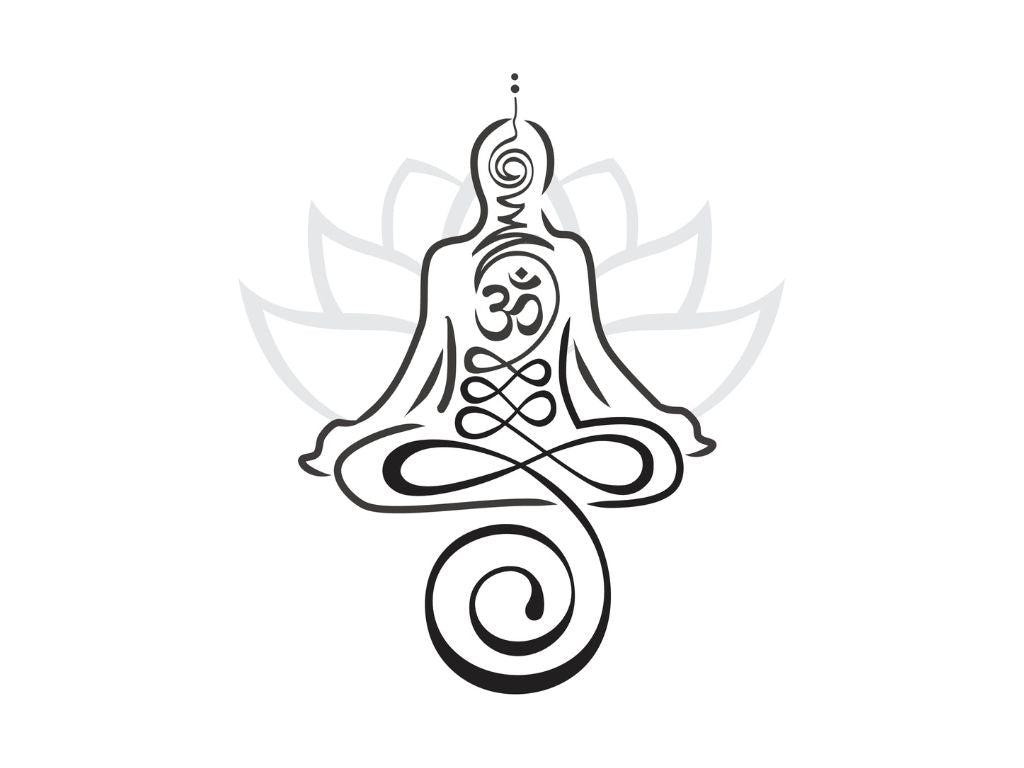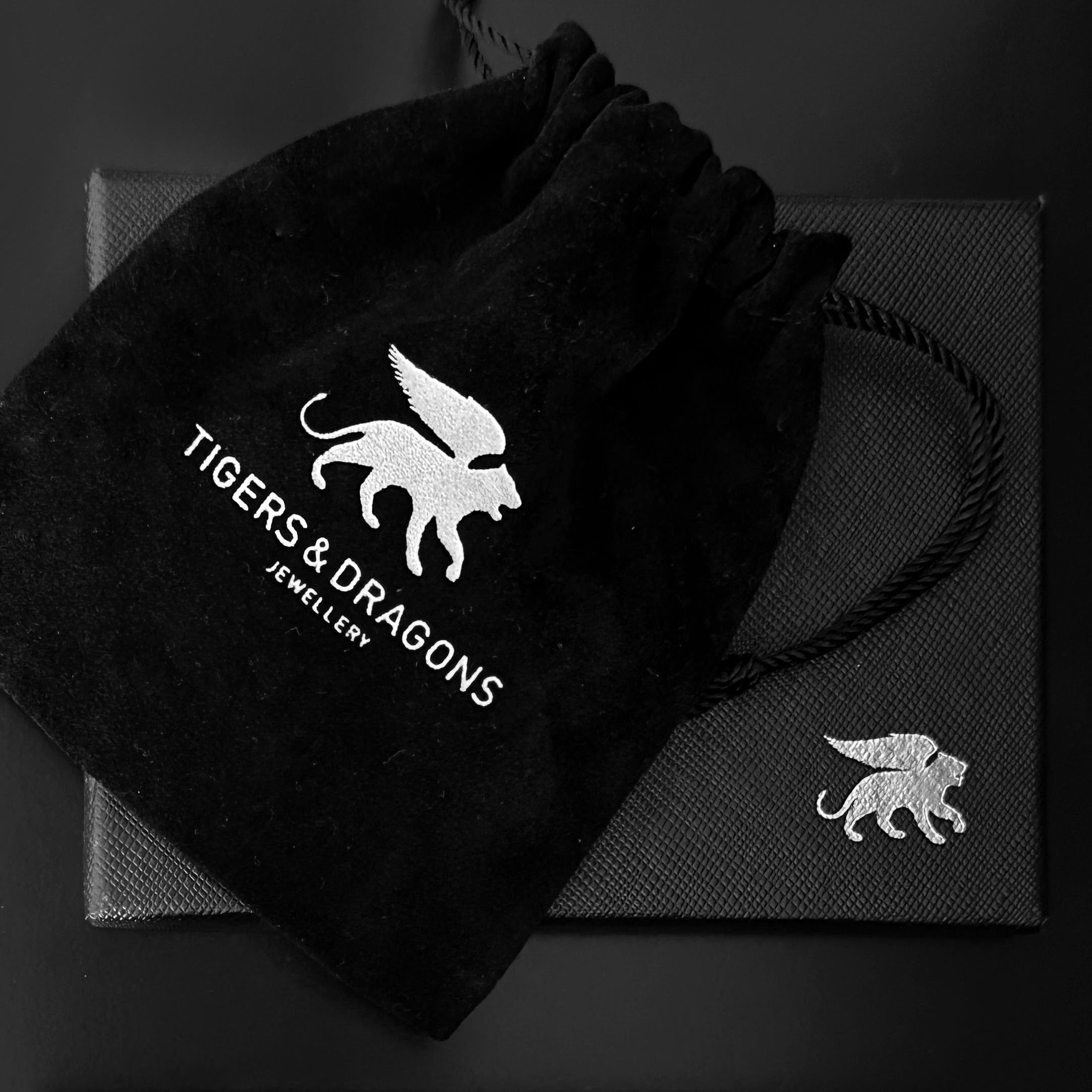Article: The Unalome Symbol: A Sacred Path to Enlightenment

The Unalome Symbol: A Sacred Path to Enlightenment
The Journey in a Symbol
The Unalome has become one of the most recognizable and meaningful symbols in contemporary spiritual culture, yet its ancient origins and deep significance often remain unexplored. This elegant design, featuring a spiraling base that gradually straightens into a direct line topped with dots or a lotus, captures the entire human spiritual journey in a single, flowing image.
At first glance, the Unalome appears deceptively simple. Yet within its curves and lines lies a profound teaching about the nature of existence, the challenges of spiritual growth, and the ultimate possibility of enlightenment. This sacred symbol serves as both a map and a reminder that the path to wisdom is rarely straight, but every twist and turn serves a purpose in our evolution.
Origins and Cultural Roots
Buddhist and Hindu Heritage
The Unalome originates from the Buddhist and Hindu traditions of Southeast Asia, particularly Thailand, Cambodia, and Laos. In these cultures, the symbol has been used for centuries in sacred art, temple decorations, and traditional tattoo designs known as Sak Yant. While its exact historical origins are difficult to pinpoint, the symbol appears in religious manuscripts and temple carvings dating back several centuries.
In Theravada Buddhism, which predominates in Southeast Asia, the Unalome is often associated with the Buddha's own path to enlightenment. Some interpretations suggest that each Buddha and Bodhisattva has their own unique Unalome, representing their individual journey from ignorance to awakening. The symbol frequently appears alongside other sacred imagery in Buddhist art, where it serves as a visual teaching tool for understanding the nature of spiritual progress.
The Hindu tradition also embraces the Unalome, where it's sometimes associated with the third eye of Shiva and the kundalini energy that rises through the chakras. This parallel interpretation emphasizes the universal nature of the spiritual journey the symbol represents, transcending specific religious boundaries.
Sacred Geometry and Symbolism
The Unalome belongs to a broader tradition of sacred geometry found throughout Asian spiritual art. Like mandalas and yantras, it uses visual form to convey spiritual truths that transcend verbal explanation. The symbol's power lies not just in its meaning but in its ability to communicate directly with the subconscious mind through its archetypal form.
In traditional contexts, the Unalome is never merely decorative. Each element of the design carries specific meaning, and the symbol is treated with the same reverence as sacred texts or religious images. This respect reflects the belief that sacred symbols can transmit spiritual energy and wisdom to those who contemplate them with proper understanding and intention.
Decoding the Sacred Design
The Spiral Base: Life's Confusion
The journey begins at the bottom with tight spirals representing birth and the initial state of consciousness. These coils symbolize the confusion, struggles, and seemingly chaotic nature of early life and unawakened existence. The spirals can move clockwise or counterclockwise, sometimes indicating masculine or feminine energy respectively.
This spiraling base represents:
- The wandering nature of the untrained mind
- Attachment to material existence
- The repetitive patterns of unconscious behavior
- The struggles and suffering inherent in unexamined life
- The necessary experiences that eventually lead to seeking truth
The density and number of spirals can vary, suggesting that each person's initial journey through confusion is unique. Some souls may require more cycles of experience before beginning their ascent toward clarity.
The Ascending Path: Growing Awareness
As the spiral begins to loosen and straighten, it represents the gradual awakening of consciousness. This middle section shows the path becoming clearer as wisdom accumulates and awareness expands. The curves become gentler, indicating:
- Growing understanding of life's patterns
- Decreased attachment to illusion
- Development of spiritual discipline
- Moments of clarity interspersed with confusion
- The ongoing work of spiritual practice
This section often contains the most variation in different Unalome designs, reflecting the highly individual nature of each person's spiritual journey. Some paths show dramatic loops, representing major life challenges or spiritual breakthroughs, while others display a more gradual straightening.
The Straight Line: Direct Path
Eventually, the path becomes a straight vertical line, representing the direct path to enlightenment once clarity is achieved. This doesn't mean the journey becomes easy, but rather that the practitioner has found their true direction and no longer wanders in confusion. The straight line symbolizes:
- Clear understanding of the spiritual path
- Unwavering determination
- Direct perception of truth
- Alignment with one's highest purpose
- The final approach to enlightenment
The Crown: Enlightenment
The symbol culminates in dots, a circle, or sometimes a lotus flower at the top, representing the achievement of enlightenment or nirvana. This crown symbolizes:
- Liberation from the cycle of suffering
- Complete awakening to truth
- Union with universal consciousness
- The dissolution of ego boundaries
- The end of the spiritual journey and beginning of existence in pure awareness
Different traditions vary in how they depict this crown. Three dots might represent the Buddha, Dharma, and Sangha (the Three Jewels of Buddhism), while a lotus represents the blossoming of consciousness in full enlightenment.
Sacred Tattoos and Body Art
In Thailand and Cambodia, the Unalome is a central element in Sak Yant, the sacred tattoo tradition. These tattoos are believed to offer protection, strength, and spiritual guidance. Traditional Sak Yant masters (Ajarn) perform elaborate rituals when applying Unalome tattoos, activating them with prayers and blessings.
The placement of Unalome tattoos is significant:
- On the back of the neck or spine: spiritual protection and alignment
- Over the heart: emotional healing and compassion
- On the wrists: mindfulness in action
- Behind the ears: wisdom and clear perception
Traditional practitioners emphasize that Unalome tattoos should point upward, never downward, as this would symbolize regression rather than spiritual progress. The symbol should be treated with respect, meaning it shouldn't be placed on lower parts of the body in traditional contexts.
Art and Sacred Spaces
The Unalome appears throughout Buddhist temples and sacred art in Southeast Asia. It's carved into temple pillars, painted on ceiling beams, and incorporated into elaborate murals depicting the Buddha's life. In these contexts, the symbol serves both decorative and educational purposes, constantly reminding visitors of the spiritual path.
Contemporary artists have embraced the Unalome, incorporating it into paintings, sculptures, and digital art. While purists sometimes question the secularization of sacred symbols, many argue that spreading the Unalome's message of spiritual growth serves a valuable purpose regardless of context.
The Paradox of the Path
One of the Unalome's deepest teachings is the paradox that we must strive for enlightenment while simultaneously accepting where we are. The symbol shows that every part of the journey is necessary and sacred, the confused spirals are as important as the straight line. This paradox reflects the Buddhist middle way: neither grasping desperately for enlightenment nor becoming complacent in ignorance.
The Unalome also reminds us that the path exists within us, not outside. The symbol doesn't represent a journey through external space but through internal consciousness. The spirals and straightening happen in the mind and heart, regardless of external circumstances.
Conclusion:
The Unalome teaches that enlightenment isn't a distant goal but a present possibility revealed through patient practice and growing awareness. Every spiral of confusion, every gradual straightening, every moment of clarity is part of a sacred journey that has been walked by countless beings before us and will be walked by countless more to come.
Whether worn as jewelry, contemplated in meditation, or simply remembered during difficult times, the Unalome serves as a powerful reminder that our struggles aren't obstacles to the spiritual path, they are the path itself. In embracing both the spirals and the straight lines of our journey, we honor the fullness of human experience and the possibility of transcendence that lives within us all.
The symbol ultimately points to a profound truth: the very fact that we can recognize and appreciate the Unalome's meaning suggests we're already on the path it describes. The awakening it represents isn't a distant achievement but an ongoing process happening right now, in this very moment of understanding.










